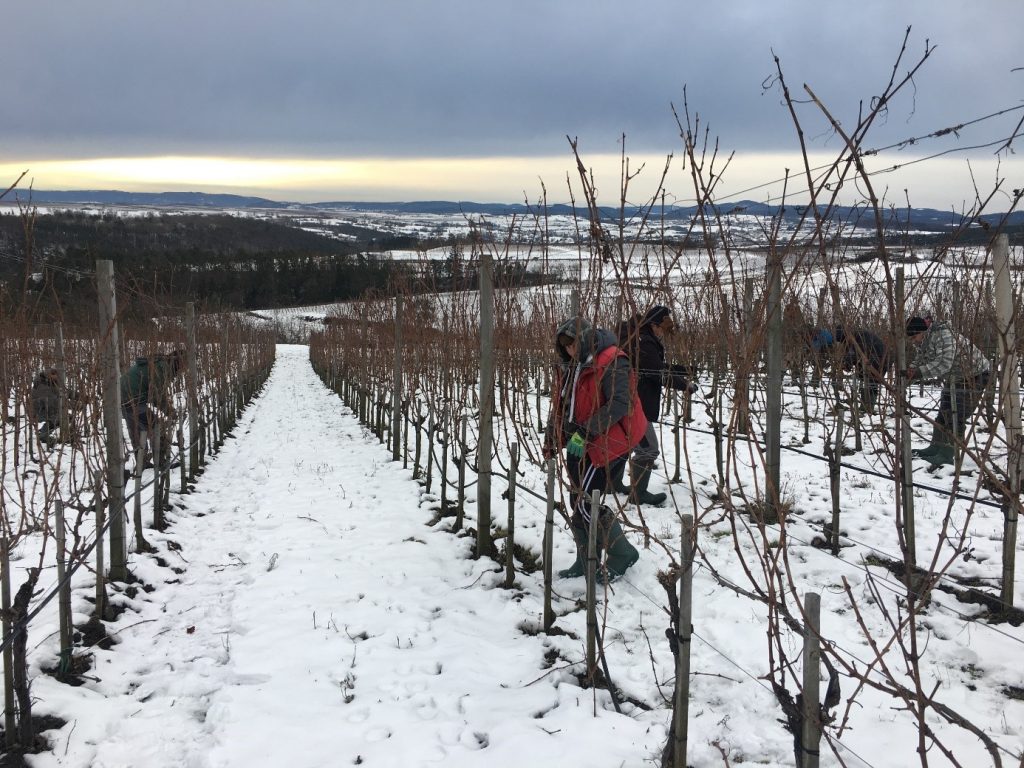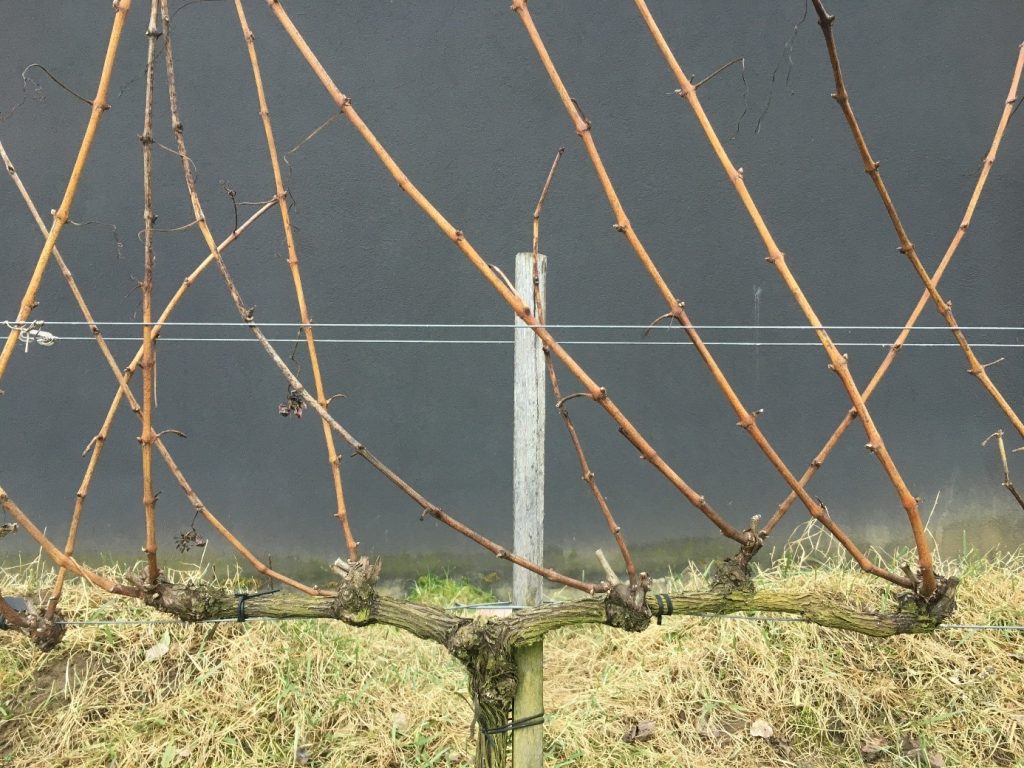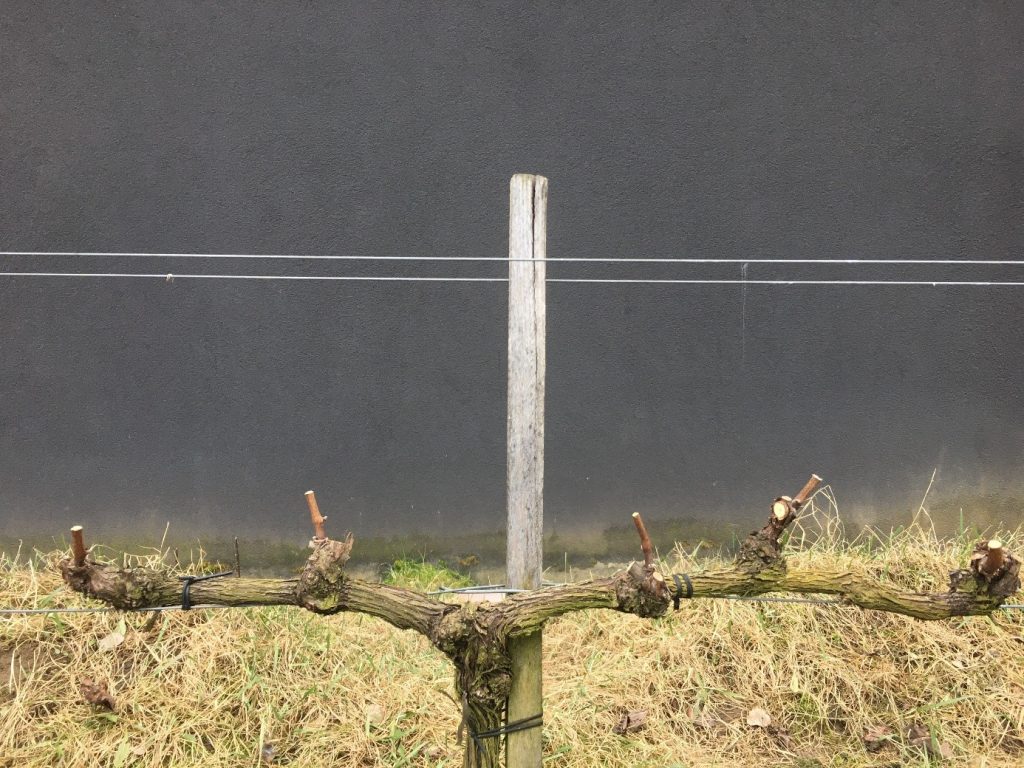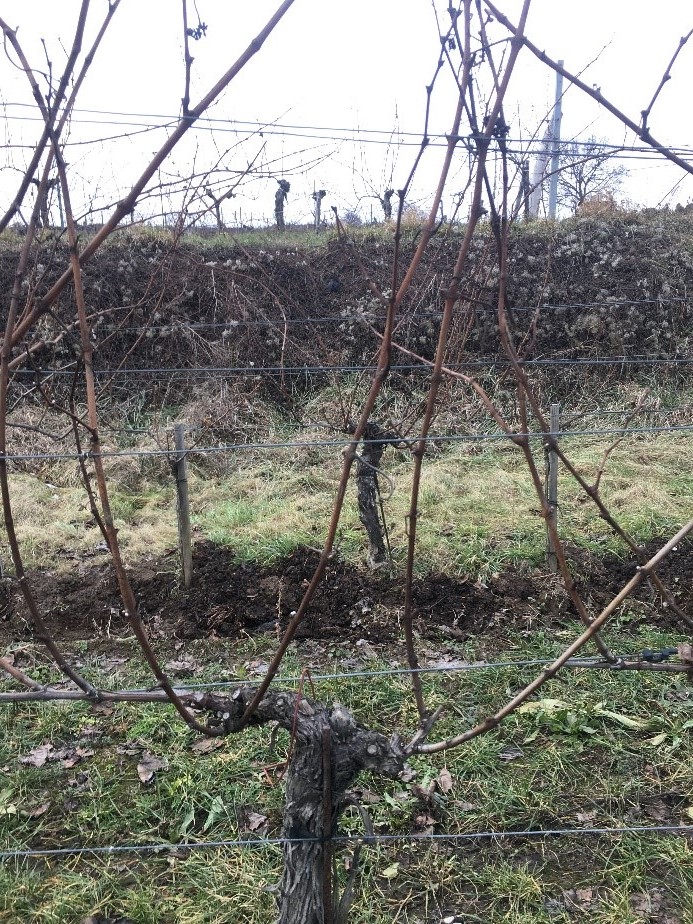A cold day in January. The vineyard is in hibernation. Nothing grows, nothing moves. Nothing? Well, that’s not true. Between the Winter solstice in December and the meterological beginning of Spring at the beginning of March, the vine is in absolute Winter dormancy – which is why these weeks are ideal for pruning.
Reserve materials. After the grapes have ripened and been harvested, the vine still has sufficient time to store nutrients into the old wood and its root system. This guarantees an adequate maturity of the wood. That takes time – and we give it. Our vines are therefore quiet in November and December. They store reserve materials in order to be prepared for a healthy and powerful start at the beginning of May.
Timing
That’s why we begin cutting in January, after the Epiphany (Feast of the Three Kings) holiday. And we want to be finished by the beginning of March at the latest. The cutting back of the shoots is the most intense vine intervention and must be done very carefully; the vine is not able to close large wounds over with tissue (callus) like, for example, an apple tree does. Large wounds remain open and dry deep into the cane, which allows the entry of fungi and diseases.
Handwork
We prune only by hand, cleanly and precisely, and only one- and two-year-old wood so that the wounds stay small and dry out quickly. In addition, we leave “respect wood” – some wood over the last eye (bud) so that the natural drying process doesn’t cause any damage. We try to give the cane shape and structure, and respect the natural flow of sap.


“Gentle Pruning” – is the name of this method, which was developed in Friuli by Marco Simonit and Piercarlo Sirch. The model was based on old training systems such as Stockkultur in Austria and Albarello and Gobelet in the Mediterranean region. The knowledge and art of the old winemakers have been applied; pruning is a craft once again.
Spur/ Cordon and Spur / Bow are the variants we use for our vine pruning. Depending on the variety and vineyard site, we make careful decisions in order to find the best training method for the vines. The intensity of the “cutting back” is actually decided by the vine, because each vine has its own growth mode and the pruner must be attunded to this in order not to overwhelm or underchallenge the vine.
And the vines thank us for this. They grow more evenly, remain healthier and more resilient, and thrive to become healthy old vines. They also are known for making the best wine.





